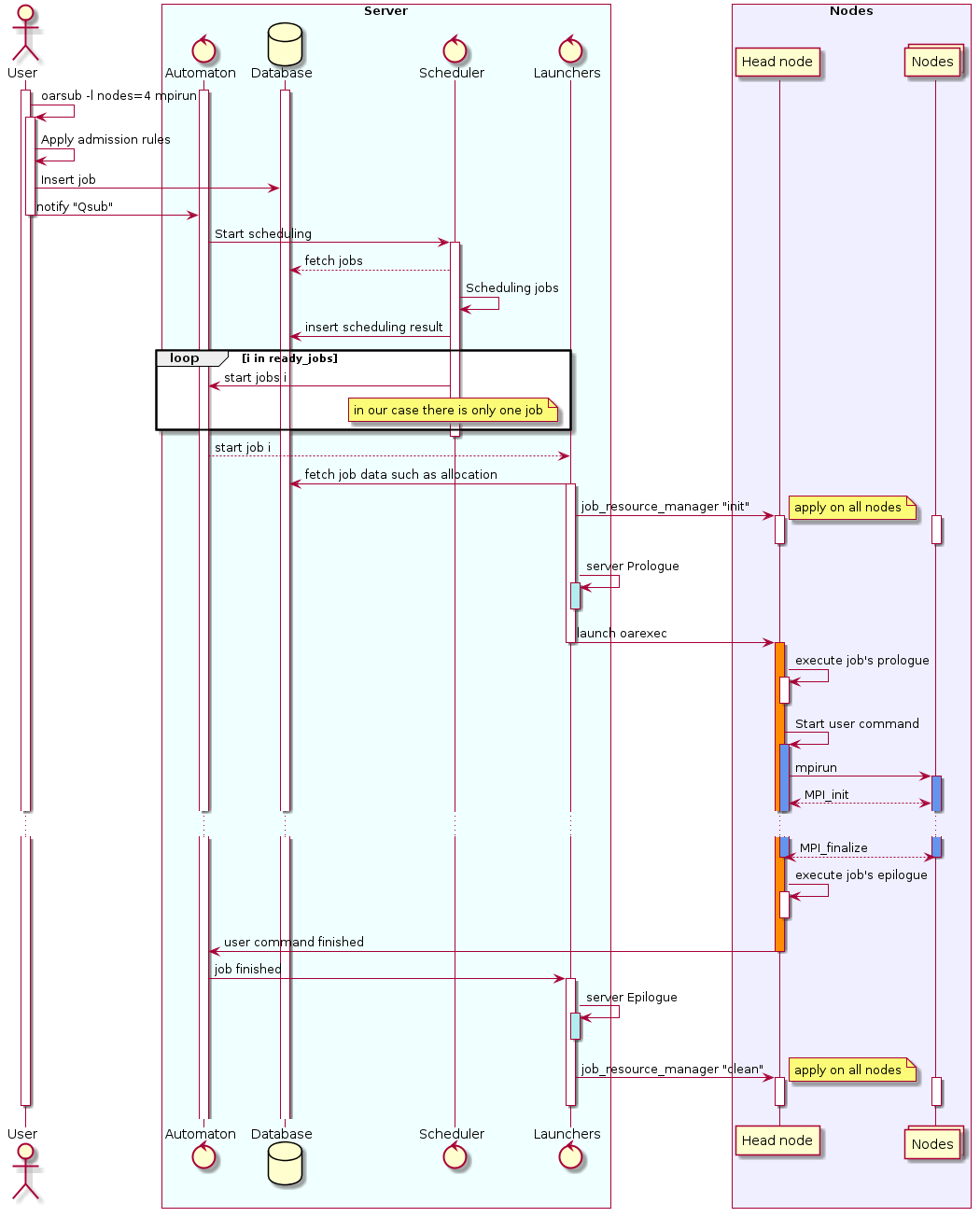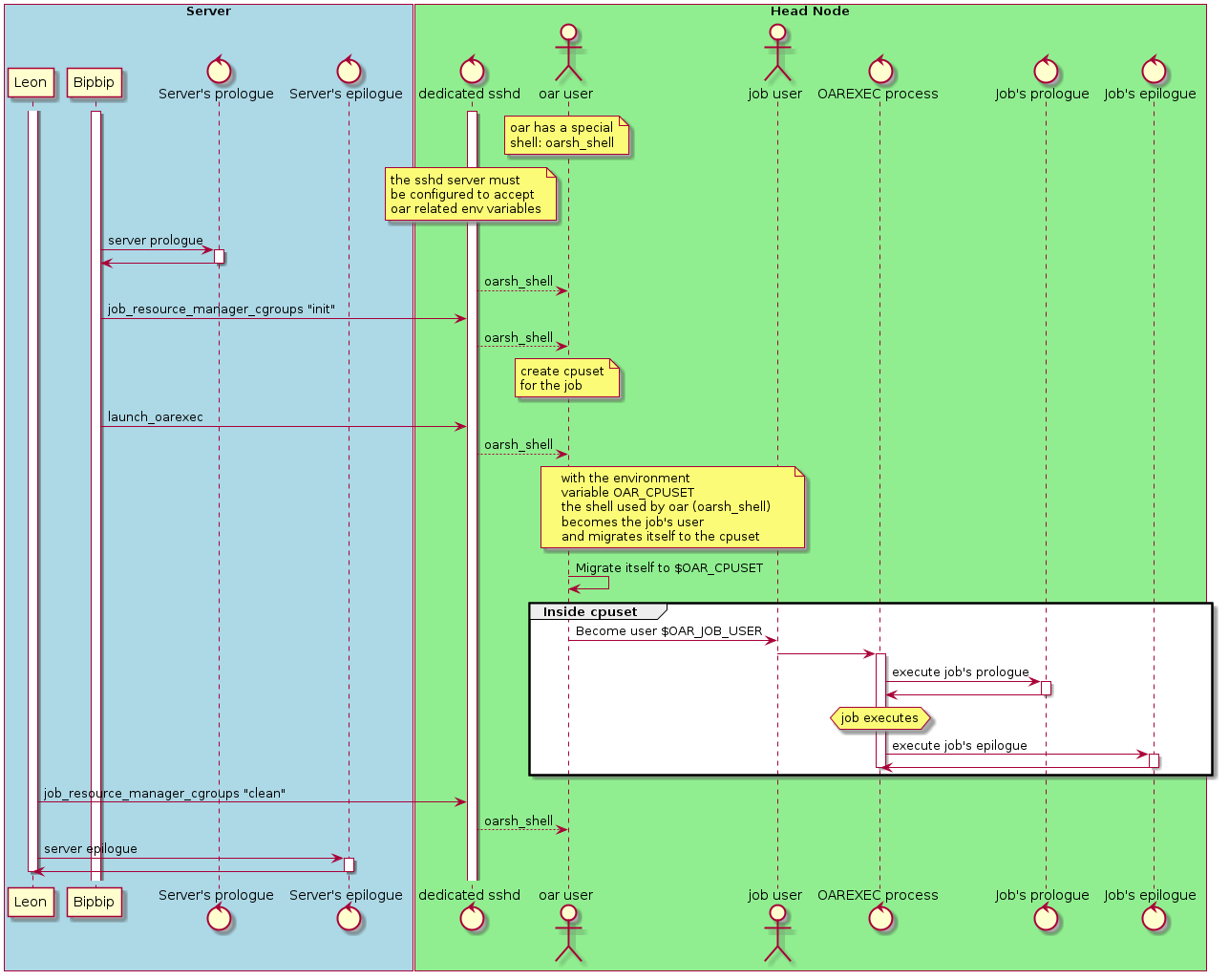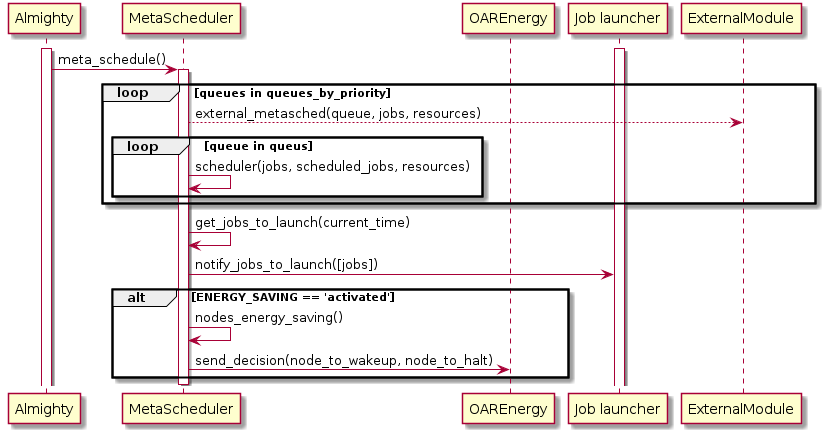Technical details and diagrams
One part of the complexity of oar comes from its distributes nature. Sequence diagrams help to understand the temporality of the actions done by oar to perform specific actions. Note, that sequence diagram are helpful to visualize chain of actions in the time, however it shows a specific scenario, and thus is not exhaustive.
Job lifetime
This diagram illustrate the job lifetime in the system. The user is connected with ssh on a frontend. The Automaton (almighty), Scheduler (meta scheduler) and Launchers (bipbip commander) are oar modules running on the server. Head node and Nodes are the nodes allocated to the job.
The job is first submitted by an user using the command
oarsub. This command executes locally the checks on the job, and executes the admission rules configured. Once the job has been processed, it is inserted into the database. Additionally, a notification is sent to the ``automaton`.A scheduling phase starts, to process waiting jobs. The jobs are directly fetched in the database.
At the end of the scheduling, the scheduler notifies the automaton to start the job that are ready by starting a
launcher(oar/modules/bipbip.py).The launcher retrieves information about the job from the database (the allocated node, the user command etc). Before starting the job, the
launcherinits the nodes (using the script oar/tools/job_resource_manager_cgroups.pl). Before starting the job, thelauncherruns a server prologue (if configured) on the server.One node is selected as the
Head nodewhich holds the main job’s processoarexec(oar/tools/oarexec).oarexecis responsible for launching the job’s prologue (if configured by an administrator) and the user command.In the presented scenario, the user’s command finishes. It is detected by
oarexecas the end of the job.oarexeclaunches the job’s epilogue if configured, and notifies theautomatonfor the end of the job.Finally, a
launcheris start to handle the end of the job: it runs a server prologue if necessary, and clean the nodes used by the job.

Sequence diagram of the lifetime of a job. Click on the image to see a bigger version.
Job execution chain
This diagram illustrate how oar launches a job. The module (Bipbip) is in charge of launching a job. Oar accesses the node using a dedicated sshd server that executes on the node. When the server connects to a node using the dedicated sshd server, the script oar_shell is executed (it is configured to be the default shell for the user oar). Additionally, the dedicated sshd server is configured to forward some environment variables from the server to the nodes. oarexec (oar/tools/oarexec) is the main program started by oar on the head node of a job (every job as one head node). oarexec is responsible for launching and managing the user job process (only on the head node). If the user process ends, oarexec notifies oar to end the job.

Sequence diagram of the mechanisms used by oar to launch a job. Click on the image to see a bigger version.
Metascheduler communication with external module

Click on the image to see a bigger version.